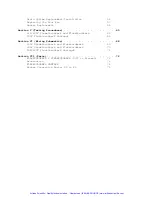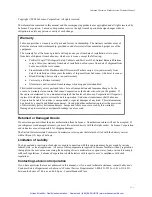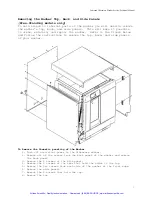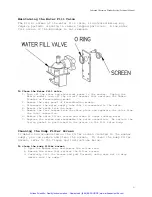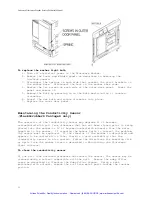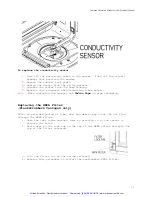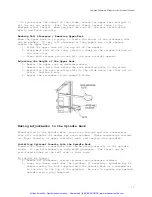
Labconco Glassware Washer Service/Technical Manual
8
SECTION II:
Maintaining and Modifying the Glassware Washers
Like any piece of laboratory equipment, the glassware washer
requires some routine maintenance and, depending on the
laboratory’s function, some modification. Section II contains
instructions on how to perform upkeep and application driven
changes.
Maintenance
Maintaining the Stainless Steel Interior
The interior of the FlaskScrubber® and SteamScrubber® Glassware
Washers is type 304 stainless steel. Never use metal scouring pads on
the stainless steel interior. Metal scouring pads can scratch or
leave metal chips that will rust.
To maintain the appearance and quality of the stainless steel interior,
perform the following tasks as needed:
•
Wipe the outer edges on the inside door panel to remove particles and
residue that occur during loading.
•
Use a sponge sprinkled with non-abrasive stainless steel cleaner to
gently wipe the washer tank and door to remove surface discoloration
caused by exposure to halogenated compounds or steel parts. In some
cases, the finish may be slightly dulled by this action.
If the hot tap water source has a high mineral content, film or spots may
develop on the washer interior. If the procedures listed above do not
eliminate the film or spots, you may run your washer through the special
cycle below.
To remove film or spots from the washer interior*
1.
Remove all glassware from the washer.
2.
Choose the Glass Program: Push the “Display” button. Using the arrow
buttons, make sure that “steam” is off, that there are zero, “0”, Pure
rinses, and the drying time is set to zero.
3.
After the first fill is complete, open the washer and carefully pour
one cup of bleach into the bottom of the tank.
4.
Close the washer door and allow the unit to wash and drain.
5.
When the washer fills the second time, open the washer and add two cups
of 4-8% acetic acid or white vinegar to the bottom of the tank.
6.
Close the washer door and allow the unit to wash and drain without
further interruption.
* If there is residue on the glassware and the washer is not utilizing the
purified water for rinsing, you can also use vinegar to break up the residue
during a “Rinse Only” cycle.
Artisan Scientific - Quality Instrumentation ... Guaranteed | (888) 88-SOURCE | www.artisan-scientific.com




